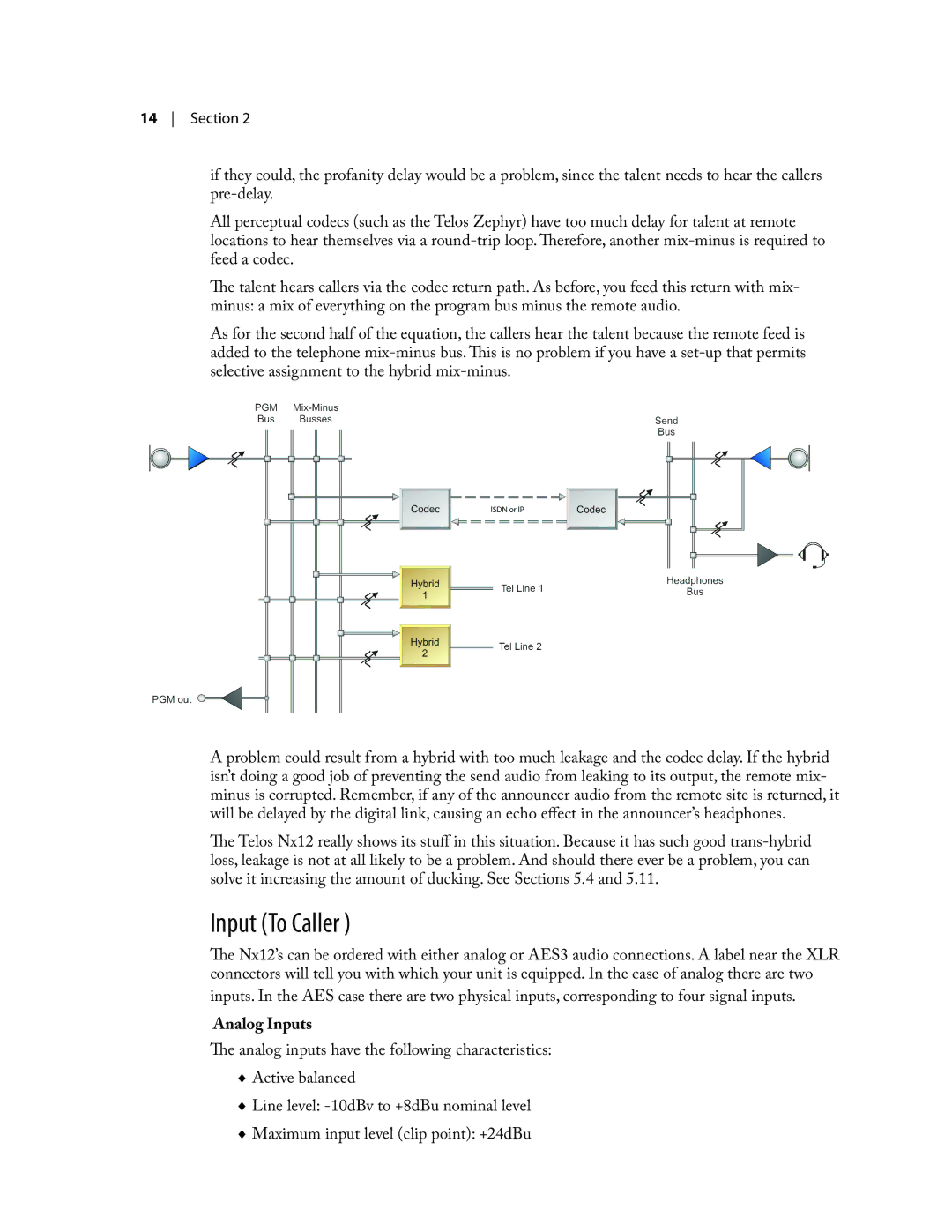
14 Section 2
if they could, the profanity delay would be a problem, since the talent needs to hear the callers
All perceptual codecs (such as the Telos Zephyr) have too much delay for talent at remote locations to hear themselves via a
The talent hears callers via the codec return path. As before, you feed this return with mix- minus: a mix of everything on the program bus minus the remote audio.
As for the second half of the equation, the callers hear the talent because the remote feed is added to the telephone
A problem could result from a hybrid with too much leakage and the codec delay. If the hybrid isn’t doing a good job of preventing the send audio from leaking to its output, the remote mix- minus is corrupted. Remember, if any of the announcer audio from the remote site is returned, it will be delayed by the digital link, causing an echo effect in the announcer’s headphones.
The Telos Nx12 really shows its stuff in this situation. Because it has such good
Input (To Caller )
The Nx12’s can be ordered with either analog or AES3 audio connections. A label near the XLR connectors will tell you with which your unit is equipped. In the case of analog there are two inputs. In the AES case there are two physical inputs, corresponding to four signal inputs.
Analog Inputs
The analog inputs have the following characteristics: ♦♦ Active balanced
♦♦ Line level:
♦♦ Maximum input level (clip point): +24dBu
